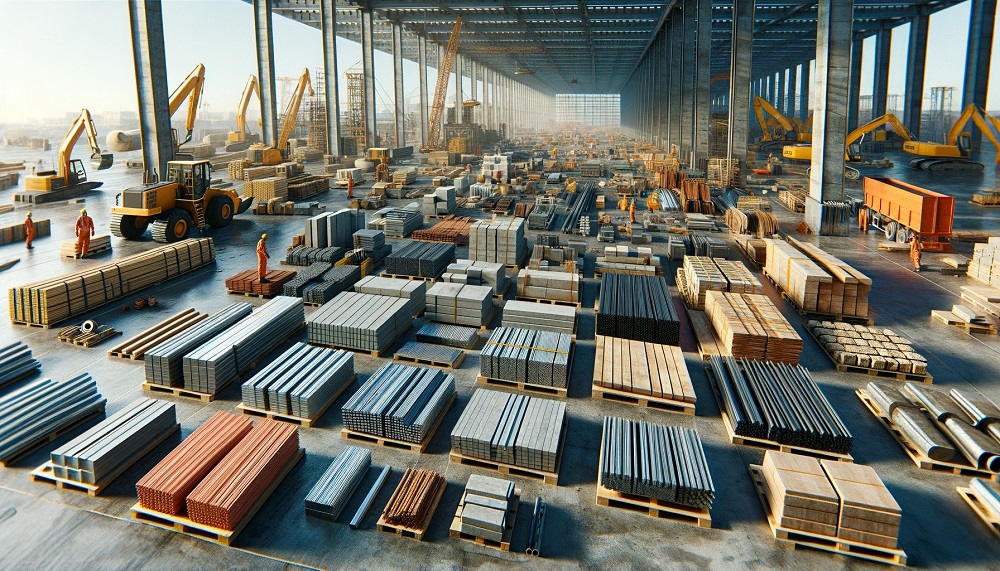Building with Excellence: Finding the Best Construction Materials in Australia

Welcome to our curated guide on sourcing high-quality construction materials in Australia! When it comes to building projects, using the right materials is crucial for ensuring durability, safety, and overall excellence. In this guide, we will walk you through the process of finding and selecting the best construction materials available in Australia.
Finding the right construction material for a project in Australia can be a daunting task. For example, you need civil supply accessories for large projects. No matter whether you’re constructing a commercial or residential site, there are steps you can take to ensure you’ll get the best materials possible. If you are involved in construction in Melbourne, especially large-scale projects, then you know that finding quality civil supply products is essential. This guide will cover what civil supply accessories are and how they are used in construction.
Understanding Australian Construction Material Standards
Australia has stringent regulations and standards in place to ensure the quality and safety of construction materials. It’s important to familiarize yourself with these standards to make informed decisions. Regulatory bodies such as the Australian Standards (AS) and the Building Code of Australia (BCA) play a significant role in establishing guidelines for construction materials.
When sourcing materials, keep an eye out for certifications and labeling that indicate compliance with Australian standards. Look for products that have been tested and certified for their quality and performance.
Researching Reliable Suppliers
Finding reputable suppliers and manufacturers is key to sourcing high-quality construction materials. Start by conducting thorough research, exploring online directories, attending trade shows, and networking with industry associations. These resources can help you identify reliable suppliers who have a track record of delivering quality materials.
Be sure to evaluate supplier credibility by checking references, reading customer reviews, and verifying certifications. A trustworthy supplier will provide you with not only quality materials but also excellent customer service and reliable delivery.
Guidance on Material Selection
Choosing the right materials requires considering project requirements, climate, environment, and functionality. A material that works well in one location may not be suitable for another. Analyze the project specifications and consult with experts to determine which materials will provide the best performance and durability.
It is also essential to strike a balance between cost, quality, and sustainability when selecting materials. While it’s important to keep budgets in mind, investing in high-quality materials can result in long-term cost savings through reduced maintenance and longevity.
Comparing Prices and Negotiating Deals
Once you have identified potential suppliers, obtaining multiple quotes will help you compare prices accurately. Take the time to analyze each quote, looking beyond the price tag to consider factors such as material quality, delivery schedules, and customer support.
When negotiating deals, focus not only on price but also on establishing a mutually beneficial relationship with the supplier. Emphasize the importance of long-term partnerships and discuss potential cost-saving opportunities. Remember, the goal is to obtain the best materials at a fair price without compromising on quality.
Ensuring Quality Control
Quality control is crucial to guarantee that you receive the materials you expect. Inspecting product samples and conducting on-site visits, if feasible, provides an opportunity to assess the quality firsthand. On-site visits also allow you to ensure compliance with Australian standards and any specific project requirements.
Establishing quality control procedures and contracts with suppliers can help set clear expectations and ensure accountability. Regular communication with the supplier, including feedback and continuous improvement, will further enhance the quality control process.
Sustainable and Eco-friendly Material Options
Australia is known for its commitment to sustainability, and the construction industry is no exception. As you source materials, consider eco-friendly options that minimize environmental impact. Look for materials made from recycled or renewable resources and those that have been certified as sustainable by organizations such as the Green Building Council of Australia.
By prioritizing sustainability in material selection, you contribute to a greener future and may even qualify for sustainability certifications or incentives that benefit your project and the environment.
Case Studies: Successful Material Sourcing in Australian Projects
Examining successful construction projects can provide invaluable insights into material sourcing. This section presents case studies highlighting projects that have prioritized high-quality materials and reaped the benefits of their choices. Learn from their experiences and apply their best practices to your own projects.
In Conclusion
When it comes to construction, never compromise on quality. Sourcing high-quality construction materials is essential for building projects that stand the test of time and for ensuring the safety and satisfaction of everyone involved. Take the time to understand Australian construction material standards, research reliable suppliers, carefully select materials, and negotiate fair deals. Quality control and sustainability should also be integral parts of your decision-making process.
Remember, building with excellence starts with sourcing the best materials. By following the steps outlined in this curated guide, you can navigate the Australian construction materials market with confidence and achieve outstanding results in your projects.

Comments are closed.